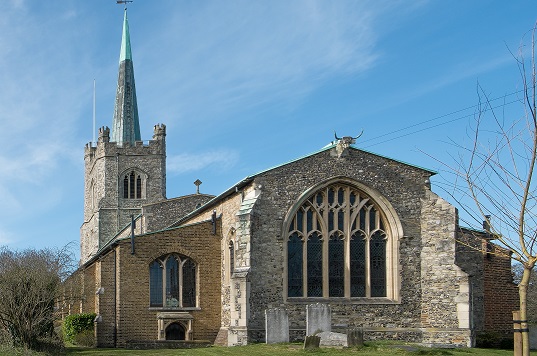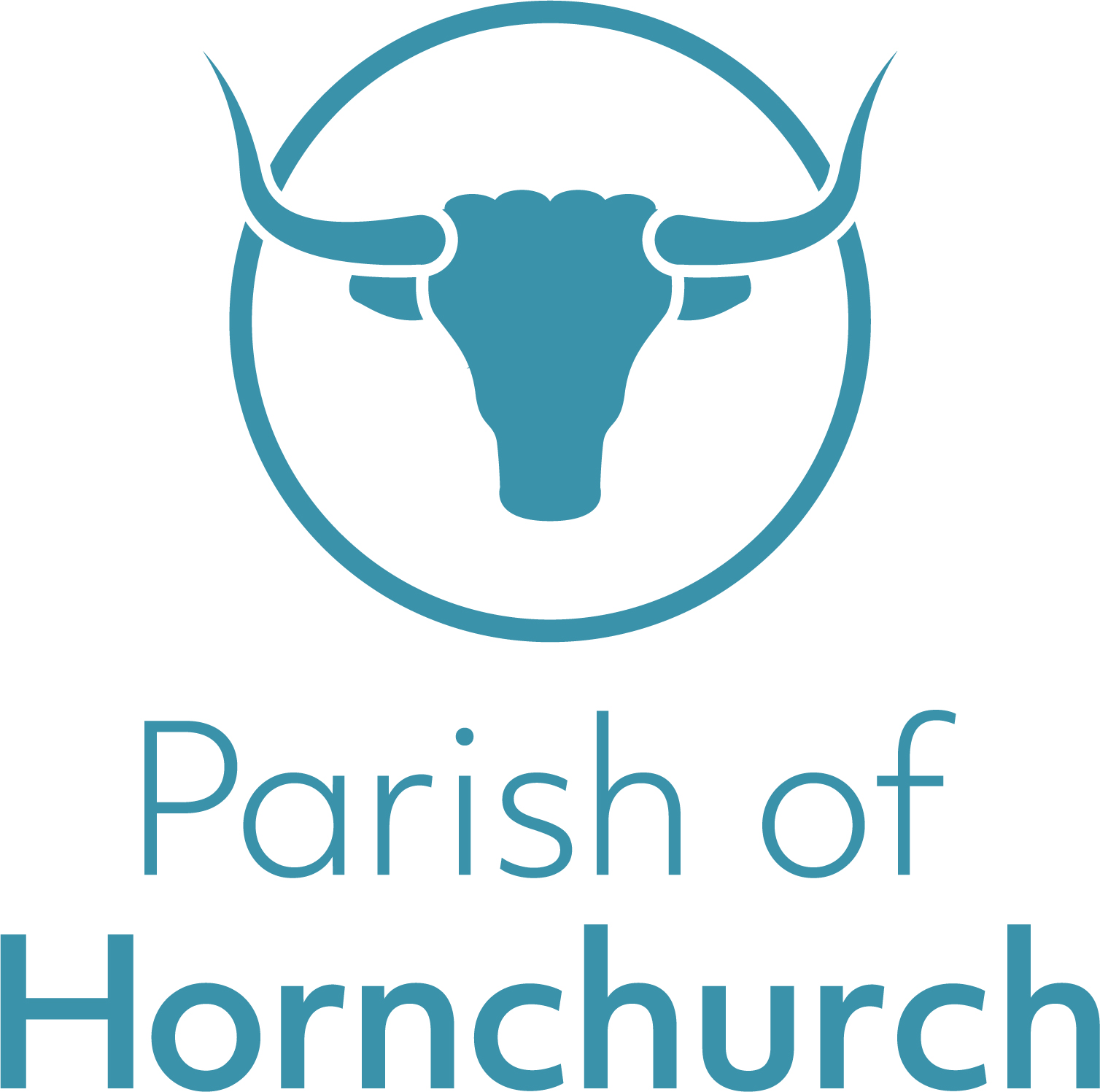
We are an historic site and as such have a rich and varied history. Below is a short snapshot of the journey that we have been on so far.
C900: A Saxon Church was probably on this site
1158: Monks of Montjoux in Italy rescued envoys of Henry II who were lost in the Alps on their way to Rome. In gratitude, Henry invited the monks to England and gave them the manors of Hornchurch Hall and Suttons to finance them, providing an annual income of £25. The monks built a new church here. The Abbot had a bull’s head and horns as his official seal, which is the likely origin of the bull’s head on the east end of the church.
1391: The monastery of Montjoux sold Hornchurch to William of Wykeham to endow his new college in Oxford. William paid 4,000 gold nobles and 500 French francs. He subsequently added the tower to St Andrew’s and promised that the college would provide future vicars for our parish.
1552: Five bells were hung in the tower; this would grow to ten by 2000.
1651: Thomas Withering, the first Postmaster General, died on his way to church.
1666: Sir Francis Prujean, President of the College of Physicians died.
1780: Robert Raikes opened the first Sunday School in Gloucester. 100 years later Sunday schools were thriving in Hornchurch.
1795: 3,000 people came to the Dell, next to St Andrew’s, for a celebrated bare fisted fight between reigning champion Mendoza the Jew and John Jackson a gentleman boxer. Jackson won in 9 rounds.
1799: The Church Mission Society was founded and has been supported by St Andrew’s for over 100 years.
1886: The arrival of the railway in Hornchurch heralded a growth of population. Emerson Park estate was the first to be built. Hornchurch Road and Suttons Lane estates followed. In consequence, the Parish of Hornchurch was sub-divided and new churches were built in Harold Wood, Elm Park, Squirrels Heath and South Hornchurch.
1887: Boys Brigade began, and in 1907 the Scout Movement was founded. Today St Andrew’s has a wide range of children’s and youth groups, both uniformed and non-uniformed.
1914-18: Hornchurch provided rehabilitation for soldiers from New Zealand who were injured in the Great War. Four from Niue Island are buried in the churchyard.
1921: On 27th March the War Memorial outside St Andrew’s was dedicated to the memory of all those who had fallen during the Great War. It also commemorates all those who have fallen in subsequent conflicts.
1928: St Andrew’s bought the redundant village school in North Street as a place of service to the Community.
1939-45: World War II—Two bombs landed in the churchyard. The Battle of Britain was fought from Hornchurch Airfield, which is now the site of the Country Park.
1967: St Andrew’s Halls were built.
1969: The house at 222 High Street was left to the church in a will; this became the Chaplaincy. The Vicarage and “Old Boys’ School Room” (the church hall) opposite the church was sold and Chaplaincy Gardens flats were built on the site.
1991: On 30th November (St Andrew’s Day) there was a service of Dedication for the new stained glass window featuring contemporary pictures like a Ford car.
1994: on 30th November (St Andrew’s Day) the Floodlights around the church were switched on by the Mayor of Havering Councillor Jack Hoepehman in a special ceremony, followed by a service of Celebration in the church.
2011: The North Street halls were refurbished, creating the front porch area, disabled access, counselling and prayer rooms and small meeting rooms.
2017: Niue islanders visited St Andrew’s on their WW1 centenary tour of Europe and presented the church with a plaque to commemorate this. The plaque is now mounted on the church wall in what has become the band area.
2021: We celebrated 100 years since the installation and commemoration of our War Memorial on 27th March. Due to the Covid 19 pandemic we were unable to hold a full service. However a small service was held, with a few socially distanced people, including member of Hornchurch British Legion, who laid a wreath at the memorial.
